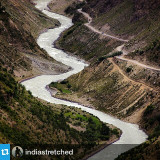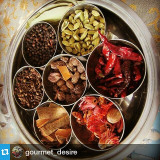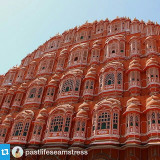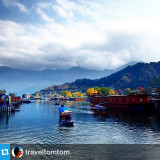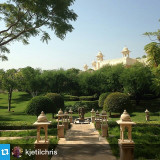Random image from our India photo collection
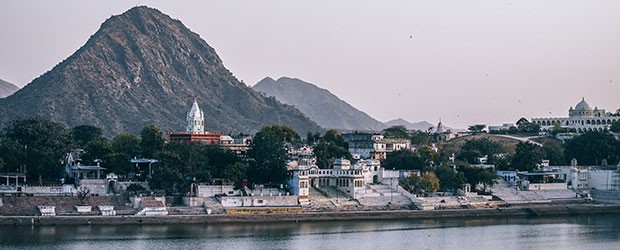
Karnataka
Fairs And Festivals
True to its colorful heritage, Karnataka has an array of festivals that add life, gaiety, and color to mundane activities.
The Paryaya Festival of the Krishna temple at Udupi, held every other year in January, marks the ceremonious handing over of the charge of the shrine to one of the eight religious orders of the Madhwacharya's spiritual descendants in rotation for a two-year term.
Thousands throng to the Melkote Temple in March to catch a glimpse of the diamond-studded crown of the temple deity taken in procession on one of the 13 days of the Vairamudi Festival.
The Karaga Festival, peculiar to Bangalore, is an old-fashioned celebration of goddess Shakti invoked in the earthen pot from which the festival derives its name. This pot, heavily bedecked with flowers, is borne by a man who observes severe penance for several days before the festival.
Dressed as a woman in saffron, sword in hand and wearing the mangalsutra (necklace) of his wife, the karaga bearer unsteadily balances this pot on his head to set out from the Dharamaraya Temple on the day of the Chaitra Purnima in April.
Keil Poldu is a festival celebrated in Coorg in the first week of September and is marked by the worship of arms and implements, sumptuous eating, followed by games and competitions on the village meadows.
The Feast of St. Mary's Basilica, Bangalore is celebrated from August 29 to September 8 in honor of Our Lady known for her miraculous powers of healing the sick.
Dussehra, a ten-day festival in September-October is symbolic of the triumph of good over evil. The city of Mysore is transformed into a fairyland of illuminated places, gaily-festooned streets and arches.
The celebrations are marked by cultural programs, exhibitions, classical music festivals, torchlight processions, concluding with a grand procession on the tenth day headed by a gaily caparisoned elephant bearing a golden howdah with a deity.
On October 17, in the wee hours, ripples of water come bubbling up a small pond at Tal Cauvery, the source of River Cauvery. The event, celebrated as Cauvery Shankaramana by the Coorgis, is symbolic of the annual return of Goddess Cauvery to her birthplace and a reassurance of her promise of continued protection to her devotees when they tried to dissuade her from becoming a river.
Thousands of devotees, both Muslim and Hindu, throng the tomb of Sufi saint, Khaja Banda Nawaz at Gulbarga for the Urs held in November.
Dharmasthala, the temple town dedicated to Lord Manjunath is busy with festivities during the Lakshadeepotsavam in November/ December for five days prior to Amavasya. The festival is marked by literary and music meets and a Sarvadharma Sammelan (an all religion meet).
Inam Dattatreya Peetham is recognized both by Muslims and Hindus because a laterite cave here was sanctified by the stays of Dattatreya Swami and Hazrat Data Hayat Mir Khalander.
The Coorg Festival is marked by folk dances and sports characteristic of the region. The National Dance and Music Festivals at Pattadakal and Navaraspur (five kilometers from Bijapur) are held in January-February every year to rekindle interest in the cultural grandeur of the Chalukya and Indo-Saracenic culture.
The Hoysala Festival celebrated at a hill near Halebid presents different styles of classical and folk dances reminiscent of the Hoysala culture. The Hampi/Vijayanagar Festival organized in December is typified by music, drama, dance fireworks, puppet shows, and spectacular processions-all combining to recreate the grandeur of a bygone era.
Go back
The Paryaya Festival of the Krishna temple at Udupi, held every other year in January, marks the ceremonious handing over of the charge of the shrine to one of the eight religious orders of the Madhwacharya's spiritual descendants in rotation for a two-year term.
Thousands throng to the Melkote Temple in March to catch a glimpse of the diamond-studded crown of the temple deity taken in procession on one of the 13 days of the Vairamudi Festival.
The Karaga Festival, peculiar to Bangalore, is an old-fashioned celebration of goddess Shakti invoked in the earthen pot from which the festival derives its name. This pot, heavily bedecked with flowers, is borne by a man who observes severe penance for several days before the festival.
Dressed as a woman in saffron, sword in hand and wearing the mangalsutra (necklace) of his wife, the karaga bearer unsteadily balances this pot on his head to set out from the Dharamaraya Temple on the day of the Chaitra Purnima in April.
Keil Poldu is a festival celebrated in Coorg in the first week of September and is marked by the worship of arms and implements, sumptuous eating, followed by games and competitions on the village meadows.
The Feast of St. Mary's Basilica, Bangalore is celebrated from August 29 to September 8 in honor of Our Lady known for her miraculous powers of healing the sick.
Dussehra, a ten-day festival in September-October is symbolic of the triumph of good over evil. The city of Mysore is transformed into a fairyland of illuminated places, gaily-festooned streets and arches.
The celebrations are marked by cultural programs, exhibitions, classical music festivals, torchlight processions, concluding with a grand procession on the tenth day headed by a gaily caparisoned elephant bearing a golden howdah with a deity.
On October 17, in the wee hours, ripples of water come bubbling up a small pond at Tal Cauvery, the source of River Cauvery. The event, celebrated as Cauvery Shankaramana by the Coorgis, is symbolic of the annual return of Goddess Cauvery to her birthplace and a reassurance of her promise of continued protection to her devotees when they tried to dissuade her from becoming a river.
Thousands of devotees, both Muslim and Hindu, throng the tomb of Sufi saint, Khaja Banda Nawaz at Gulbarga for the Urs held in November.
Dharmasthala, the temple town dedicated to Lord Manjunath is busy with festivities during the Lakshadeepotsavam in November/ December for five days prior to Amavasya. The festival is marked by literary and music meets and a Sarvadharma Sammelan (an all religion meet).
Inam Dattatreya Peetham is recognized both by Muslims and Hindus because a laterite cave here was sanctified by the stays of Dattatreya Swami and Hazrat Data Hayat Mir Khalander.
The Coorg Festival is marked by folk dances and sports characteristic of the region. The National Dance and Music Festivals at Pattadakal and Navaraspur (five kilometers from Bijapur) are held in January-February every year to rekindle interest in the cultural grandeur of the Chalukya and Indo-Saracenic culture.
The Hoysala Festival celebrated at a hill near Halebid presents different styles of classical and folk dances reminiscent of the Hoysala culture. The Hampi/Vijayanagar Festival organized in December is typified by music, drama, dance fireworks, puppet shows, and spectacular processions-all combining to recreate the grandeur of a bygone era.
Go back


